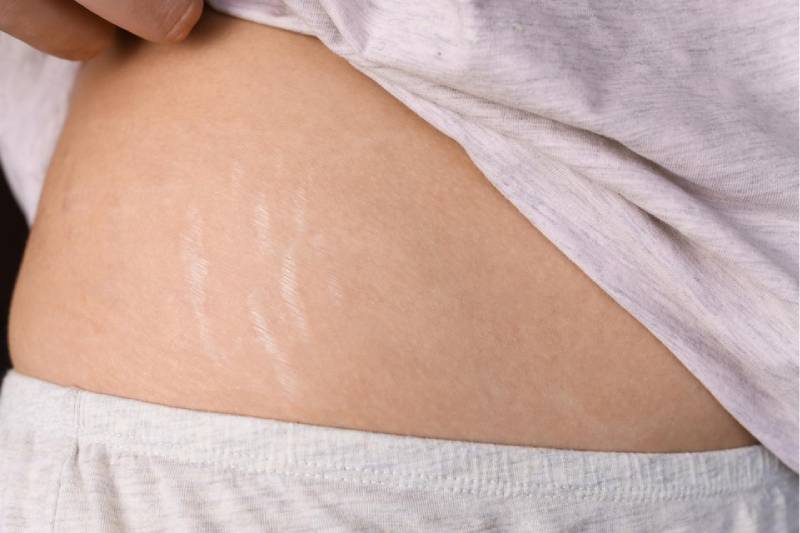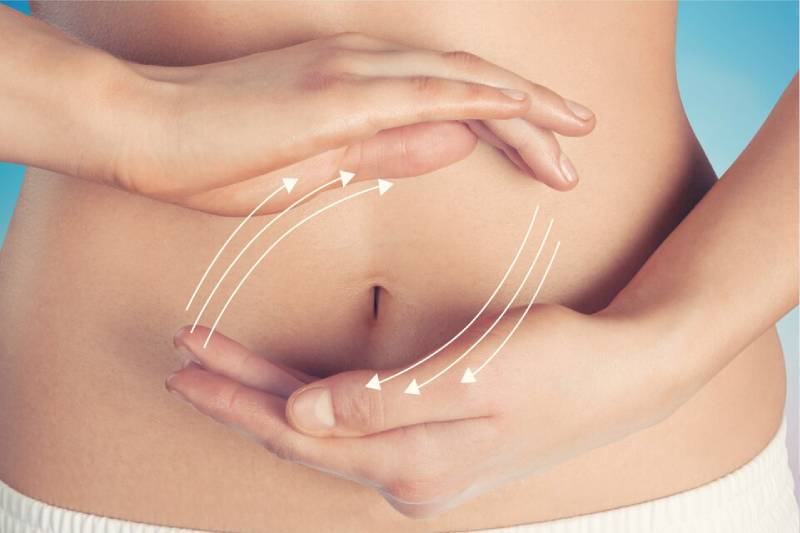Types Of Stretch Marks: Causes, Prevention, & Treatment

Stretch marks are a common skin concern that many people experience at some point in their lives. They often appear as long, narrow streaks or lines on the skin and can vary in colour and texture. In this informative guide, we will explore the different types of stretch marks, their causes, and available treatment options.
What Are Stretch Marks?
It is also known as striae, a form of scarring that occurs when the skin undergoes rapid stretching. They are most commonly found on the abdomen, thighs, hips, buttocks, breasts, and upper arms. Stretch marks can affect people of all ages and genders, and they can be a source of self-consciousness for many individuals.
Causes of Stretch Marks
There are several factors that contribute to the development of stretch marks. The most common causes include:
- Rapid growth: Stretching of the skin due to sudden growth can lead to the formation of marks.
- Weight fluctuations: Significant changes in weight, either gain or loss, can contribute to the development of these marks.
- Pregnancy and hormonal changes: During pregnancy, hormonal shifts and the stretching of the skin can result in the appearance of marks.
- Genetics: Genetic factors can influence an individual's susceptibility to developing these marks.
- Corticosteroid medications: Prolonged use of corticosteroids may weaken the skin's elasticity, increasing the likelihood of marks.
- Medical conditions: Certain health conditions can make the skin more vulnerable to the formation of these marks.
Understanding these causes can help individuals take preventive measures and explore suitable treatment options to manage their appearance effectively.
Different Types of Stretch Marks
Stretch marks can be classified into different types based on their formation, appearance, and associated conditions.
The main types of stretch marks are:
Striae Rubrae
Striae rubrae is the early-stage mark that appears pink or red. They indicate recent skin stretching and are characterized by increased vascularity and inflammation. These marks can be sensitive to touch and may cause itching or discomfort. It is important to address them promptly to minimize their appearance.
 Striae Albae
Striae Albae
Striae albae is mature or old marks that have faded and turned white or silver. These marks indicate that the initial inflammation has subsided and the skin has undergone some healing. Although they may be less noticeable than red stretch marks, they can still affect one's self-confidence.
Striae Gravidarum
Striae gravidarum, commonly known as pregnancy marks, occurs as a result of the rapid expansion of the abdominal area during pregnancy. They usually appear on the abdomen, breasts, hips, and thighs. Hormonal changes, increased levels of cortisone, and stretching of the skin contribute to their formation. Proper skincare during pregnancy can help reduce their severity.
Striae Nigrae
Striae nigrae is a specialized type of mark that is more commonly observed in individuals with darker complexion skin types. They appear as dark grey or black lines and may occur on the abdomen, breasts, buttocks, or thighs. Similar to other marks, they are a result of the skin being stretched beyond its capacity.
Striae Caerulea
Striae caerulea is another type of mark that is predominantly found in individuals with darker complexions. These marks appear dark blue or purplish in colour, indicating an active inflammatory response. They can occur due to rapid weight gain, growth spurts, or hormonal imbalances. Proper skincare, moisturization, and lifestyle modifications can aid in their management.
Striae Atrophicans
Striae atrophicans are characterized by thinned and depressed skin in the areas where marks have formed. They may occur in individuals with certain medical conditions, such as Cushing's syndrome or as a side effect of prolonged corticosteroid use. Surgical procedures can also result in this type of stretch mark. Treatment options may involve topical creams, laser therapies, or other medical interventions.
Prevention and Treatment of Stretch Marks
Preventing and effectively managing stretch marks requires a combination of preventive measures and targeted treatments. Here are some strategies for prevention and treatment:
Prevention of Stretch Marks
- Maintain a healthy and balanced diet: Eating a nutrient-rich diet can promote skin health and elasticity, reducing the risk.
- Stay hydrated: Proper hydration keeps the skin moisturized and improves its elasticity.
- Gradual weight changes: Avoid rapid weight gain or loss. Aim for gradual and healthy weight management.
- Regular exercise: Engage in regular physical activity to keep the skin toned and maintain overall skin health.
- Moisturize the skin: Apply moisturizers or creams containing ingredients like cocoa butter, shea butter, or vitamin E to keep the skin hydrated and supple.
Treatment of Stretch Marks
- Topical creams and oils: Various creams, lotions, and oils are available that claim to reduce the appearance. Look for products containing ingredients like retinol, hyaluronic acid, or collagen-boosting compounds.
- Laser therapy: Laser treatments can help stimulate collagen production, reducing the appearance. Consult with a dermatologist to explore this option.
- Microdermabrasion: This procedure involves exfoliating the outer layer of the skin to promote new skin growth and minimize the appearance.
- Chemical peels: Chemical peels remove the top layer of the skin, allowing new skin to regenerate.
- Consult a dermatologist: For severe or persistent marks, it's advisable to consult a dermatologist who can provide personalized treatment options based on your specific needs.
Remember, the effectiveness of treatments may vary from person to person, and it's important to consult with healthcare professionals for guidance tailored to your individual situation.
Conclusion
Stretch marks are a common skin concern that can affect people of all ages and genders. Understanding the different types of stretch marks and their causes is essential in managing and reducing their appearance. While complete removal may not be possible, there are various treatment options available to minimize their visibility. Additionally, adopting healthy lifestyle habits and considering natural remedies can contribute to healthier-looking skin.
FAQs
Are stretch marks only a result of pregnancy?
No, They can occur due to various factors such as rapid weight gain or loss, puberty, medical conditions, and the prolonged use of corticosteroid medications.
Can men get stretch marks?
Yes, They can affect both men and women. While pregnancy is a common cause in women, men can develop the marks due to weight fluctuations and muscle growth.
Are there any natural remedies for treating stretch marks?
Some natural remedies like moisturizing with oils, maintaining a healthy diet, and staying hydrated can contribute to improving the appearance of the marks, but their effectiveness varies from person to person.
Do stretch marks go away on their own?
They may fade over time, but they typically do not completely disappear. However, there are treatments available to help improve their appearance.
Are there any risks associated with laser therapy for stretch marks?
Laser therapy is generally considered safe. However, some individuals may experience temporary redness, swelling, or skin sensitivity in the treated area. It is important to consult with a qualified professional to discuss potential risks and benefits before undergoing the procedure.
Related Articles
- 30 Sep 24
Updating Soon The Episodes
- 30 Sep 24
Storing Essential Oils
- 30 Sep 24
What Are Essential Oils
- 30 Sep 24
Science Of Essential Oils
- 30 Sep 24
Happy To Receive Naari Samman Award
- 30 Sep 24
How Are Essential Oils Obtained?
- 30 Sep 24
Gateway To Africa - Istanbul
- 30 Sep 24
Et Global Indian Leader 2022
- 30 Sep 24
Can Essential Oils Help With Self-Care?
- 30 Sep 24
Pain Remedy Essential Oils
- 30 Sep 24
Asian - African Iconic Brand Awards 2022
- 30 Sep 24
Core & Pure Pain Buster Oil
- 30 Sep 24
Tea Tree Essential Oil From Core & Pure
- 30 Sep 24
Business Icon Award
- 30 Sep 24
